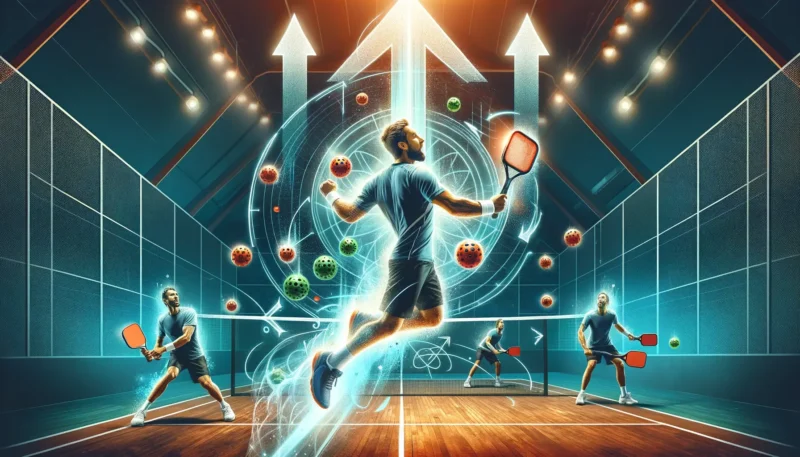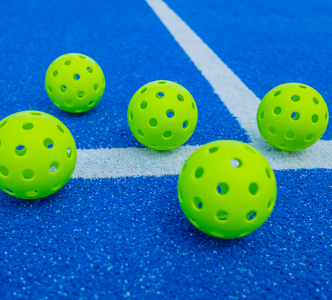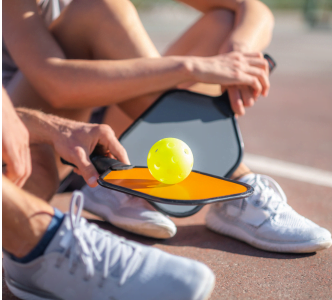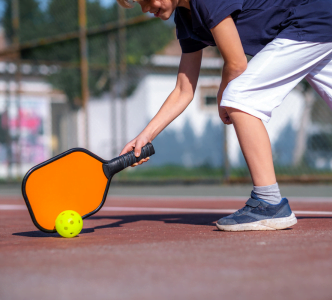When I first started playing pickleball, it felt like the Wild West, there was very little information online about how to improve at the game.
That’s why I come up daily with in-depth and helpful guides and tips for pickleball players who want to improve their game.
In this article, I’m going to share the top 17 pickleball tips for intermediate players that I wish I had known when I was getting started.
Looking back, I realize I wasted too much time losing games that I could have won if I had known these tips. Make sure that you learn all these essential intermediate tips, if you’re not, you might not be playing to your full potential.
I aim to ensure you don’t make the same mistakes. These aren’t just tips, they’re the cornerstone for improving your pickleball skills.
17 Pickleball Tips for Intermediate Players
1. Adjust Your Footwork
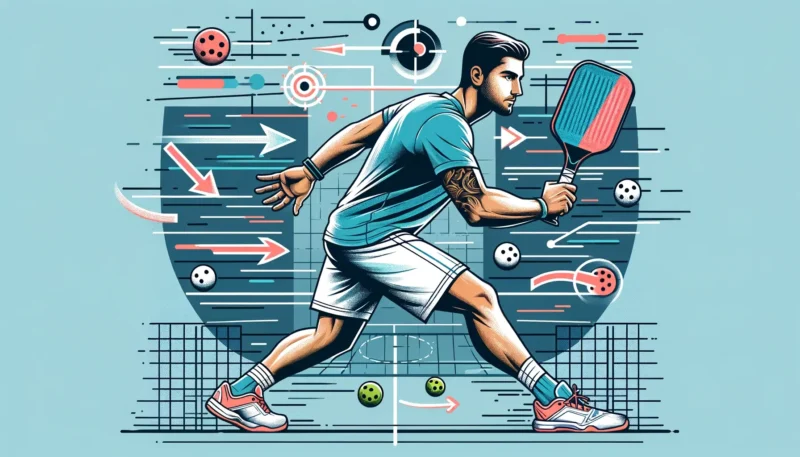
If there’s one thing I’ve learned in my years of playing pickleball, it’s that footwork isn’t just a part of the game, it’s the foundation of it. Many intermediate players often overlook this, leading to missed shots and lost points. Your footwork is crucial, especially for challenging plays like the 3rd shot drop, which demands precision. Footwork and proper court positioning also considered the best strategies for getting ratings in pickleball.
You can’t afford to be sluggish on your feet if you’re aiming for advanced levels. Focus on positioning yourself optimally, avoiding overreaching or getting too cramped by the ball. Aim for footwork that feels like second nature, allowing you to fluidly move into shots with the right technique.
My Advice: The key to exceptional footwork is practice. Incorporate drills that enhance your lateral and forward movements. Over time, you’ll find yourself better positioned, quicker on the court, and more effective in your plays.
If you are a beginner I recommend you to read:
2. Develop Your Patience
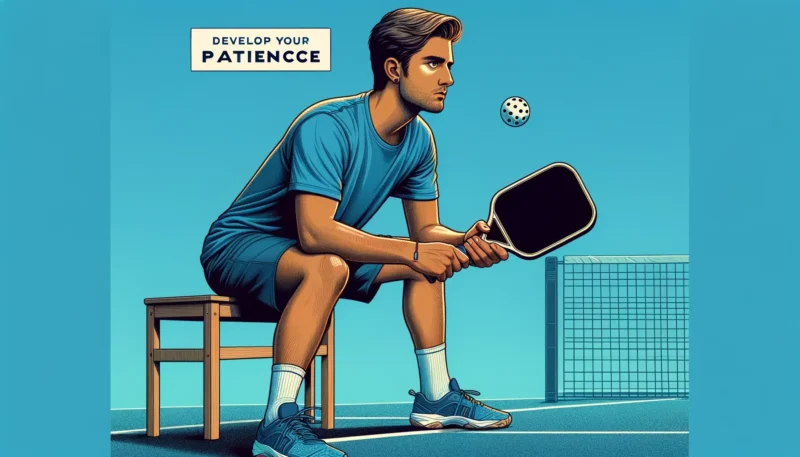
Patience is a virtue, and in pickleball, it’s a game-changer. Once you start to slow down the game in your mind, you’ll see a significant difference in your play. Reflect on the points you’ve lost due to impatience, those hasty, ill-timed shots can cost you the game.
Being patient means setting up your plays thoughtfully, and waiting for the right moment to strike. It’s about outlasting your opponents, making them make the first mistake. This strategic patience can turn the tide against even the most formidable opponents.
So next time you’re on the court, take a breath, slow down, and play the long game. Your newfound patience will not only frustrate your opponents but also open up opportunities for you to seize control of the match.
3. Hit Each Shot with Purpose
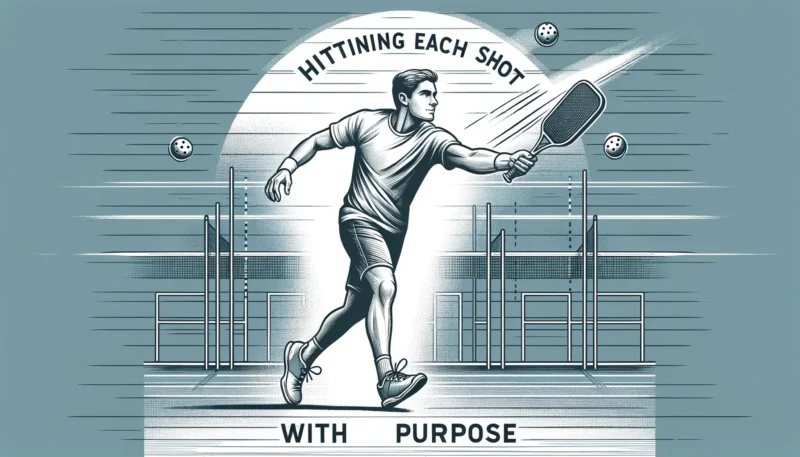
In pickleball, every shot counts, and understanding the ‘why’ behind each one can elevate your game significantly. Intermediate players often have a range of shots at their disposal, but the real skill lies in knowing when and why to use each one. Whether it’s a strategic dink, a third shot drop, or a powerful drive, each has its moment.
Think about placement as well. It’s not just about hitting the ball, it’s about where you’re sending it. Are you targeting your opponent’s backhand? Are you aiming deep and to the middle? Precision and strategy in your shot placement can unsettle even the most skilled opponents.
Advice: The transition from a good player to a great one begins with intention. Don’t just play the shots, play them with a purpose.
4. Learn When to Move Forward and When to Stay Back on Drop Shots
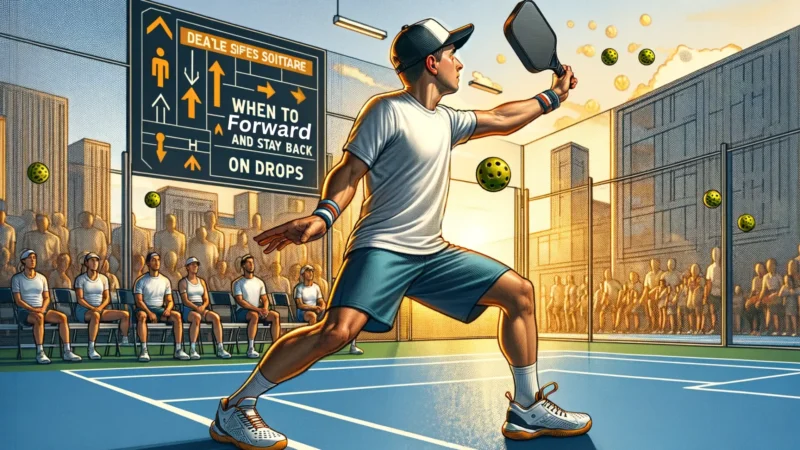
In higher-level pickleball, your court positioning is everything. I’ve played against many who possess incredible power and speed, and the key to countering them is smart court movement, especially around the kitchen or NVZ line, where the game’s pace intensifies.
I’ve learned through experience that when you’re at the NVZ line and start losing control of the point, it’s often wise to give up a little ground. Step back from the kitchen line, it gives you those precious extra moments to effectively respond to your opponent’s aggressive plays.
If your team has popped up a high ball that’s ripe for smashing, don’t stick too close to the line. Backing off a bit can be the difference between a lost point and a heroic save. And for those occasional lobbers you’ll encounter, if you’re not quite the tallest player on the court, be ready to step back swiftly to handle those high-flying shots.
5. Learn When to Back Off the Kitchen Line
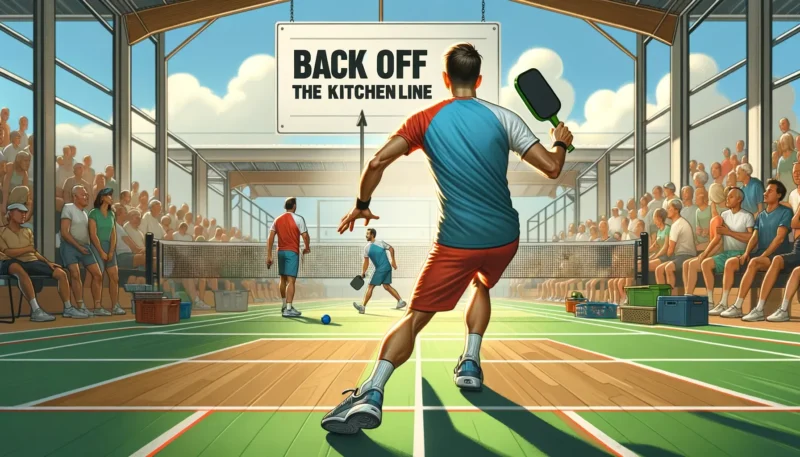
Positioning is a game-changer at intermediate levels. You’ll meet players with explosive power and rapid hand speed. Adapting your court movement to these challenges is crucial.
I’ve seen many intense battles at the NVZ line, where the momentum can shift quickly. In such moments, consider stepping back from the kitchen line. This tactical retreat allows you more time to handle your opponent’s assaults.
Also, watch for high balls your team might inadvertently set up for the opponent. If you’re too close to the line during these plays, you’ll barely have time to react. Stepping back can relieve pressure and improve your chances of keeping the point alive.
Moreover, against dedicated lobbers, not all of us have the height advantage. Sometimes, it’s prudent to back off a bit from the kitchen when expecting a lob. This slight adjustment can be a strategic move in handling those challenging shots.
6. Avoid Leaving the Non-Volley Zone Line Without a Good Reason
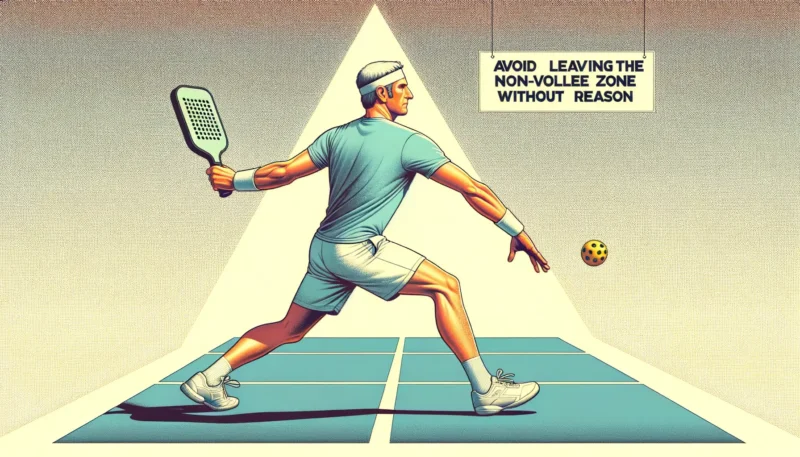
As you progress, you’ll see players unnecessarily giving up their position at the non-volley zone line. It’s a common mistake that can hold you back from reaching higher levels.
My advice: hold your ground at the NVZ line unless there’s a solid reason to move. Unnecessary retreats give your opponent an upper hand, easing their pressure and allowing them more time to think.
Maintain a strong, ready position. It’s not just about standing your ground; it’s about being prepared for anything. This stance can pressure your opponent into making mistakes while keeping you ready to pounce on opportunities. Remember, it’s not just about where you stand; it’s about how you stand.
Also read:
7. Develop a Strategy of Unpredictability

One thing I’ve learned over my years of playing pickleball is the power of unpredictability. When you’re predictable, even intermediate players can quickly adapt to your style. I’ve seen many who stick to their familiar shots and strategies, only to be outplayed by those who mix things up.
Start by varying your shots and tactics. Don’t fall into a rhythm that your opponent can easily read. I once faced an opponent who had a knack for switching up his playstyle, keeping me guessing and on my toes throughout the match. It’s about finding that balance between consistency and surprise.
But a word of caution: don’t lose sight of your core game. It’s tempting to constantly try new things, but remember, consistency is what solidifies your skills. The trick is to be unpredictable within the framework of your strengths. Know your strong suits and weave in variations that complement them, not detract from them.
8. Always Stay in the Ready Position
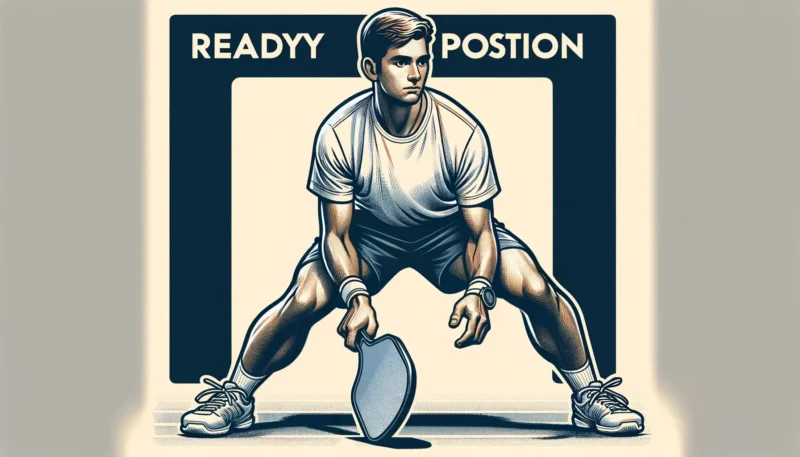
I cannot stress enough the importance of the ready position in pickleball. It’s more than just a stance; it’s a state of readiness for whatever comes your way. Throughout my playing years, I’ve noticed that the best players are always in a state of alertness, ready to move in any direction at a moment’s notice.
The ready position is about being balanced, knees slightly bent, paddle up and in front, and eyes on the ball. This stance allows you to react quickly, whether it’s a fast drive coming your way or a sudden drop shot. It’s not just about physical readiness; it’s about mental preparedness as well.
In doubles, this becomes even more crucial. I’ve played countless doubles matches where quick reflexes and a solid ready position made the difference between winning and losing crucial points. It’s a fundamental skill that’s easy to overlook but can dramatically improve your game.
9. Master Backhand Shots (and Force Them)
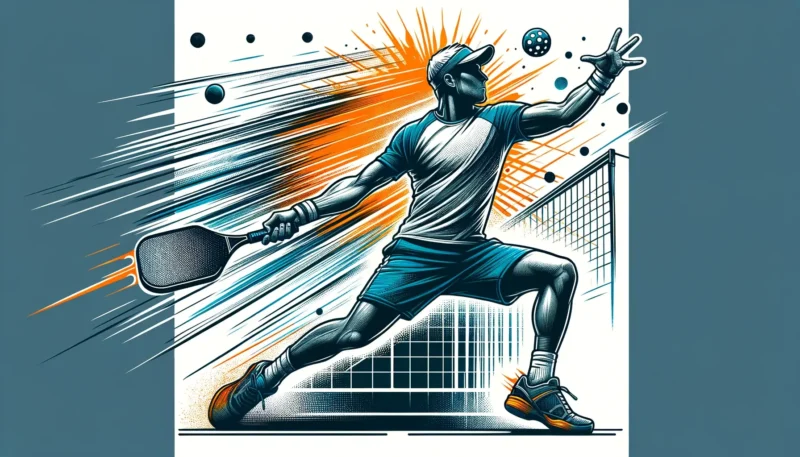
Mastering the backhand shot has been a game-changer for me. It’s a common weakness among many players, but turning it into a strength can give you a significant edge. A strong backhand shot not only improves your defensive play but also opens up offensive opportunities.
Practice your backhand shots regularly. Focus on both power and placement. I often train by aiming at specific targets to improve my accuracy. And don’t just work on your backhand; learn to force your opponent into backhand shots. If you can consistently direct play to your opponent’s backhand, especially if it’s their weaker side, you gain a strategic advantage.
Advice: The key to a great backhand isn’t just in the swing, it’s in the footwork and positioning as well. A well-executed backhand shot requires proper setup, so work on integrating your footwork with your stroke. This integration is what elevates a good player to a great one.
10. Concentrate on Shots Before Hitting Them
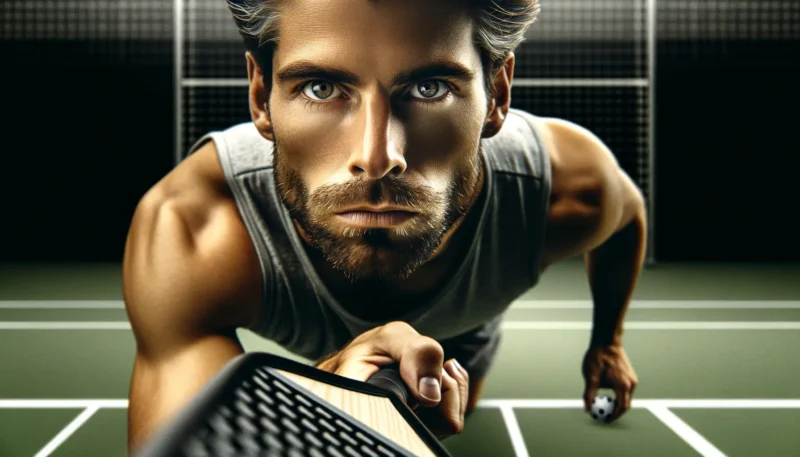
In my playing, I’ve learned the importance of mental focus in pickleball. Before executing any shot, take a brief moment to concentrate on your target and strategy. This mental preparation makes a significant difference.
Many intermediate players lose points by rushing into shots without thinking. It’s not just about hitting the ball,q it’s about hitting it with a purpose. Whether you’re setting up a serve or returning a volley, take that split second to align your intentions with your actions. This level of focus will sharpen your game and often catch your opponents off guard.
11. Deliver Deep Serves and Serve Returns
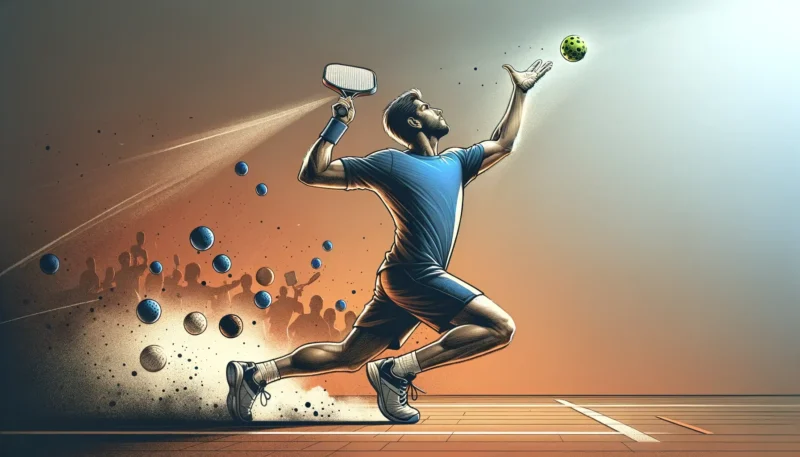
Deep serves and returns can be a powerful tool in pickleball. They push your opponent back, limiting their offensive options and giving you control of the point. I’ve seen and experienced firsthand the effectiveness of deep, well-placed serves and returns in shifting the momentum of a game.
When serving, aim for depth. A serve that lands deep in the court forces your opponent to hit a return from a less advantageous position, often leading to a weaker return. Similarly, when returning serve, try to push your opponent back as far as possible. This tactic can disrupt their rhythm and set you up for a more aggressive follow-up shot.
12. Aim at Your Opponent’s Feet
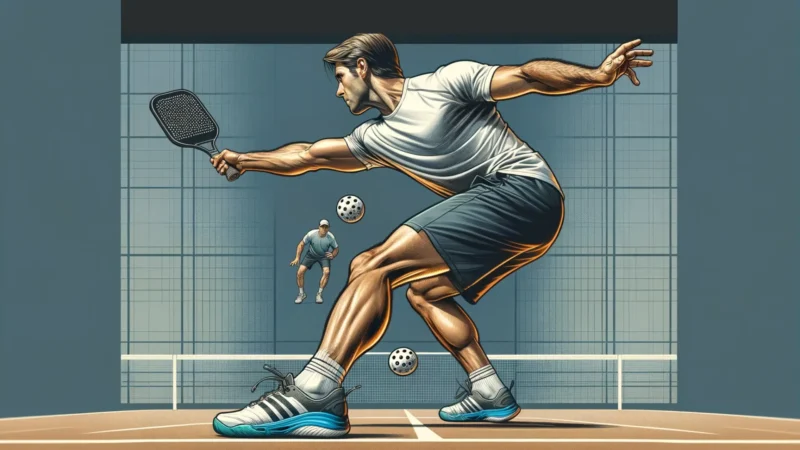
Targeting your opponent’s feet is a strategy I’ve used with great success. It’s a simple yet effective tactic, especially in volley exchanges at the net. Hitting the ball at your opponent’s feet forces them to hit an upward shot, which often results in a weak return that you can easily attack.
This approach requires precision and timing. Practice shots that skim low over the net and land at your opponent’s feet. It’s a skill that can turn defensive plays into offensive opportunities. Remember, in pickleball, sometimes the best offense is a strategic defense.
13. Hit to the Weaker Opponent in Doubles
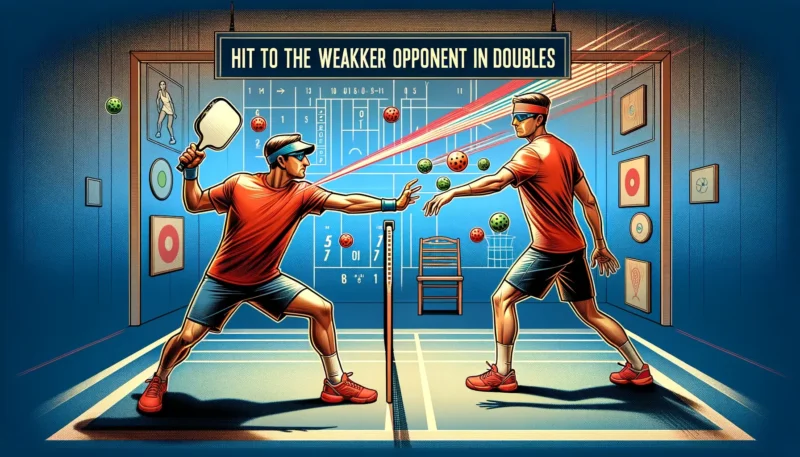
In doubles play, identifying and targeting the weaker opponent can be key. I’ve played numerous matches where focusing on the less skilled player made all the difference. It’s not just about exploiting their weaknesses; it’s about playing strategically.
Pay attention to both opponents’ strengths and weaknesses from the start. Once you identify the weaker player, direct more shots their way, but do so subtly. The idea is to gradually tilt the game in your favor without making it obvious that you’re targeting one player. This strategy requires finesse and good judgment.
14. Return Serves Down the Middle
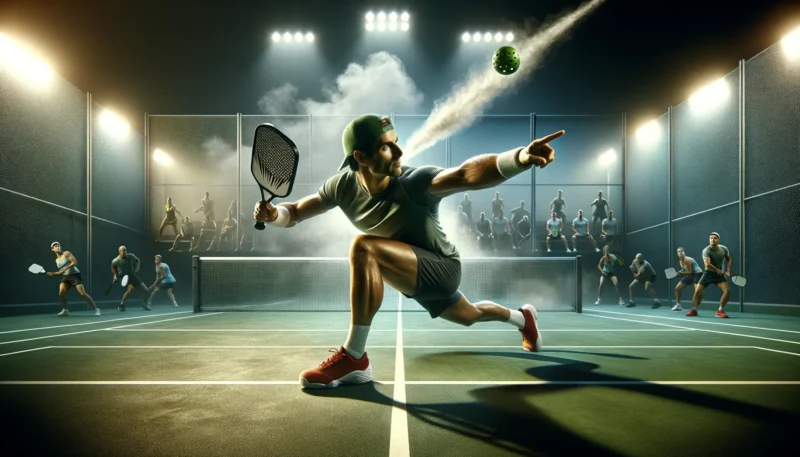
Returning serves down the middle in doubles has been a game-changer in my experience. It’s a tactic that not only minimizes the angles for your opponents’ return shots but also creates confusion between them.
When you send the ball down the middle, you force your opponents to communicate and decide who will take the shot. Often, this leads to hesitation or miscommunication, giving you an advantage. Practice this with your partner to perfect the timing and placement of these shots. It’s a strategic move that can lead to easy points and disrupt your opponents’ flow.
15. Practice Good Teamwork and Communication in Doubles
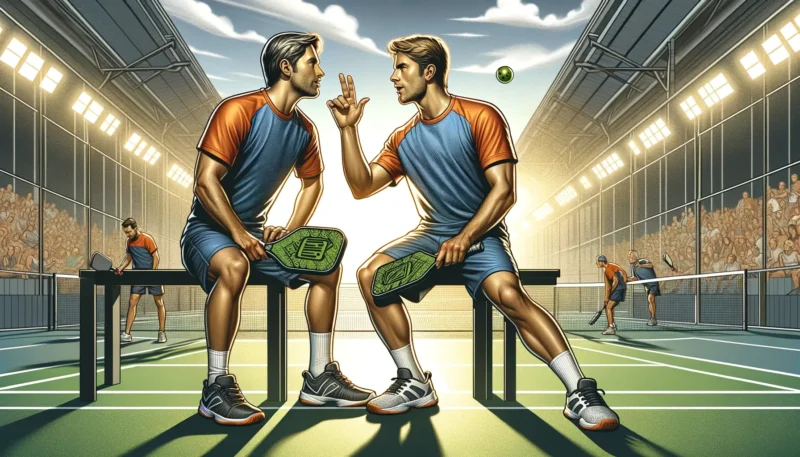
In doubles, the synergy between you and your partner is crucial. I’ve played with various partners, and the most successful matches were those where we communicated effectively and moved as a unit.
Developing signals and a game plan before the match can greatly enhance your performance. During the game, keep communicating – call for shots, warn each other of potential smashes, and support each other throughout. Good teamwork can often compensate for individual weaknesses and is key to dominating in doubles play.
16. Strategically Place the Stronger Player in Doubles Matches
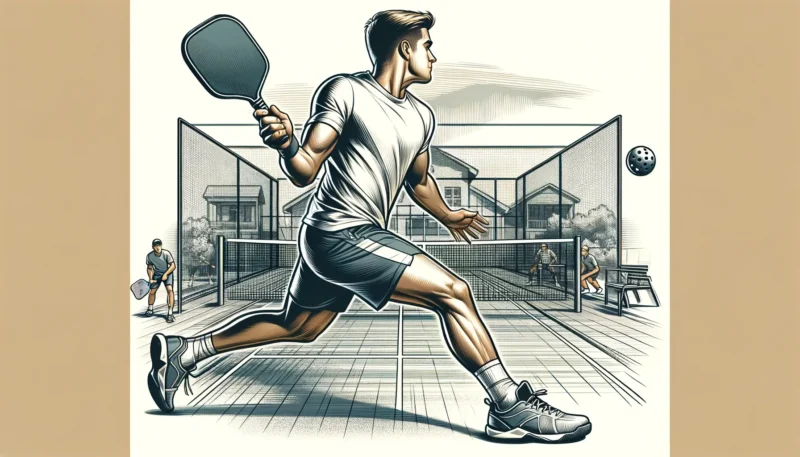
Positioning in doubles is about playing to your strengths. If one player is stronger, it’s often beneficial to position them in a way that maximizes their impact on the game. In my playing history, I’ve found that placing the stronger player on the right side (for right-handers) often gives them more opportunities to dominate the play.
However, this doesn’t mean the stronger player should take all the shots. It’s about creating a balance where both players contribute effectively. Analyze your and your partner’s strengths and weaknesses and decide on a strategy that optimizes your team’s performance.
17. Master Dink Shots
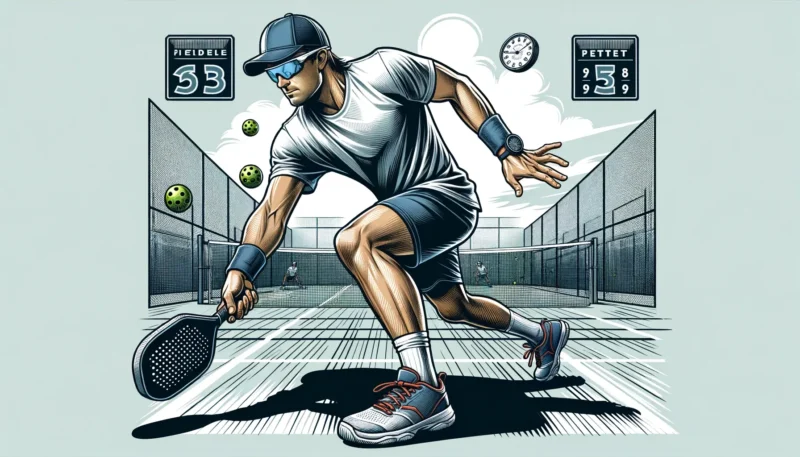
Mastering the dink shot is essential for any intermediate pickleball player. It’s a finesse shot that, when executed well, can draw your opponents out of position and create openings for more aggressive shots.
The key to a good dink is control, not power. Practice hitting soft, controlled shots just over the net and into the non-volley zone of your opponents. This requires finesse and touch, something that I’ve spent countless hours perfecting. A well-placed dink can be incredibly effective in breaking down your opponent’s defense and setting you up for the winning shot.
Conclusion
As we wrap up Pickleball tips for intermediate players, remember that the journey to becoming a better pickleball player is ongoing. Each of these strategies is a tool in your arsenal, designed to enhance your game and challenge you to think and play smarter.
I encourage you to integrate these tips into your practice and matches. Notice how each adjustment affects your play, and don’t be afraid to tweak your approach as you learn and grow.
FAQs
How often should I practice to improve my intermediate pickleball skills?
A consistent practice schedule is key. Aim for at least 3 times a week, mixing drills with actual games. Remember, quality over quantity-focused, intentional practice sessions are more beneficial than just hitting the ball around.
What’s the most important skill to master at the intermediate level?
Footwork and positioning are crucial. They lay the groundwork for advanced strategies and shots. Improving these will not only boost your game significantly but also prepare you for higher-level play.
How do I improve my shot accuracy in pickleball?
Practice targeted drills. Focus on hitting specific areas of the court and vary your shots. Consistent practice, coupled with a clear understanding of each shot’s purpose, will greatly enhance your accuracy.
Can playing doubles help my game?
Absolutely! Doubles improve your teamwork, court awareness, and reaction time. It’s a great way to sharpen your skills while learning to anticipate and adapt to different playing styles.
How important is a mental strategy in intermediate pickleball?
Mental strategy is as important as physical skill. It involves understanding your opponents, being patient, and making smart decisions on the court. Developing a strong mental game will give you a significant edge.

